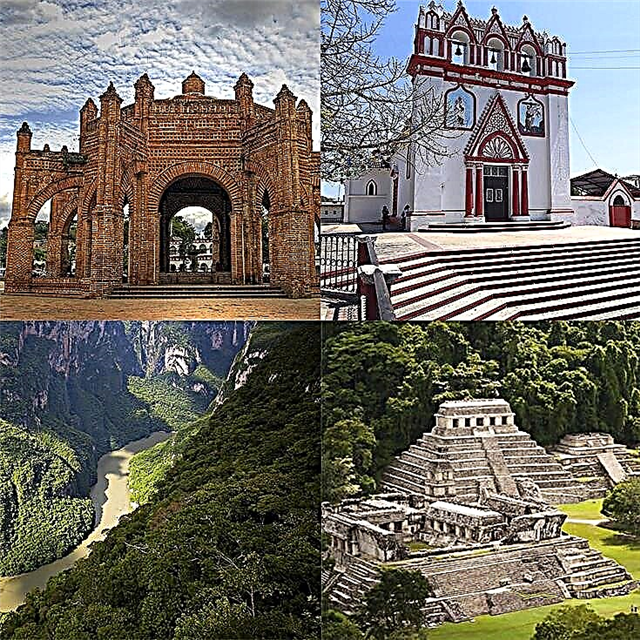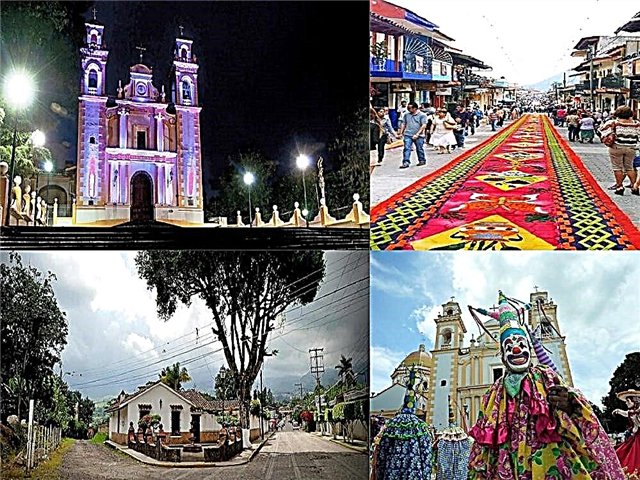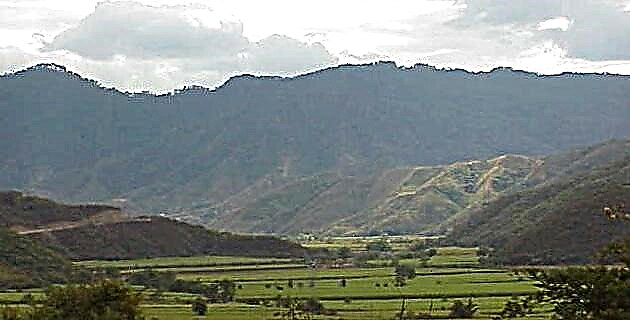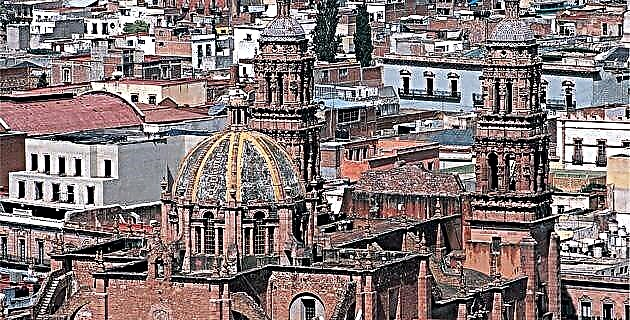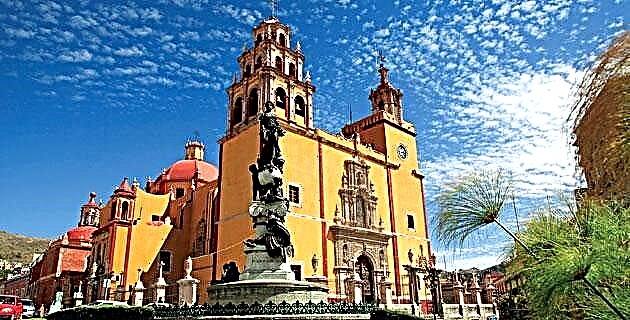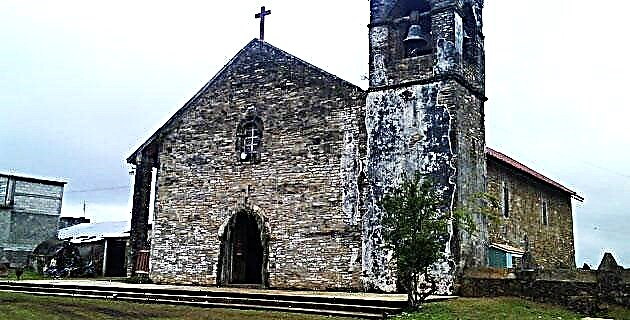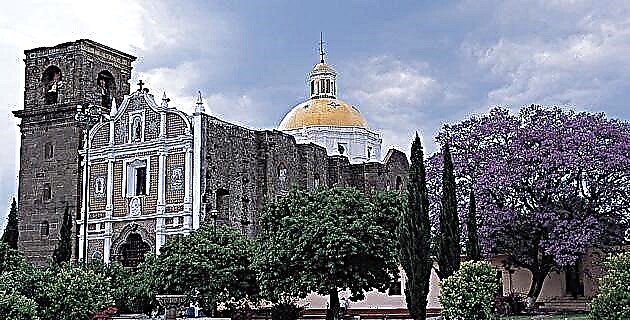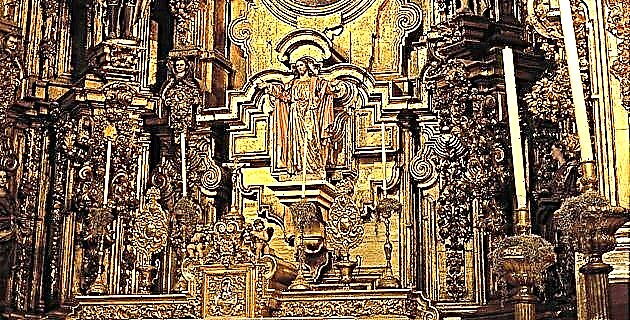
This brief information is in order to make known that the colonial golden altarpieces built during the sixteenth, seventeenth and eighteenth centuries, are made with carved wood that forms the decorative front part in front of the viewer and a whole wooden support structure that forms the support of the upper part.
At the same time, this note is intended to be of interest so that those who can collaborate in its conservation, since most of the altarpieces are being damaged by the wood moth, to the extreme extent of finding in some areas only the lamina of gold, because the insects have already eaten the wood.
This brief information is in order to make known that the colonial golden altarpieces built during the sixteenth, seventeenth and eighteenth centuries, are made with carved wood that forms the decorative front part in front of the viewer and a whole wooden support structure that forms the support of the upper part. At the same time, this article is intended to interest those who can, collaborate in its conservation, since most of the altarpieces are being damaged by the wood moth, to the extreme degree of finding in some areas only the lamina gold, because the insects have already eaten the wood.
Most of the churches built during the years 1540 to 1790 are, inside, richly decorated with Mexican wooden altarpieces that can be a main altar, located at the back of the presbytery, collateral altarpieces attached to the walls of the transept of the Main nave and laterals attached to the walls of the sides of the main nave. In them the following four styles can be appreciated: Plateresque, Baroque Estípite or Churrigueresco, Baroque Salomónico and Ultra Barroco or Anástilo (Shroeder et al 1968).
What are altarpieces
The altarpieces are the support for a series of religious themes and are architecturally composed of two parts; an anterior or frontal divided into two main parts, one on the left side called the Gospel and another on the right side, that of the Epistle, each one is composed of the following parts: body, streets, entrecalles, basement (predella), base, columns, entabtament, sculptures, panel painting, oil paintings, friezes, pediment, niches, frames and semi-pillars (Herrerías, 1979). The front part is the one that is exposed to the faithful, the one that is really seen and contemplated by them and appreciated by visitors familiar with Colonial Art. The back part is the support for the elements of the front part and is generally composed of posts, andirons, beams, idlers, planks, tables and frames that are assembled together vertically and horizontally with the help of metal fastening elements and in some cases tied with henequen twine. The boards and planks joined at their edges are reinforced or with linen canvases glued and superficially covered with henequen fibers, also glued.
After having carried out the National Project for the Fumigation of Museums, Archives and Libraries of the INAH, during 1984-1994 and after having carried out the fumigation of some altarpieces requested by the boards of various cities and towns to the Restoration Directorate of that institution, and Also by means of the anatomical study of 40 wood samples provided by the Restorers of the Polychrome Sculpture Workshop of the National Coordination for the Restoration of Cultural Heritage for their identification, the author found that generally the supports were built with coniferous wood (Pinus, Cupressus, Abies, Juniperus), with the exception of those from the Yucatan Peninsula, in which wood from Dicotyledonous Angiosperms (red cedar: Cedrela odorata L.) was also used.
The most frequent pests
The back of the main altars is generally separated from the wall, while the collaterals and sides are attached to it, generating with this situation that in most cases they are not given the minimum maintenance and are found covered with accumulated dust. for many years and plagued by xylophagous insects, such as termites (wood moth) and anobids known as woodworms.
These wood-eating insects are distributed almost throughout the Mexican Republic, but with greater frequency and abundance in Mexico City and in the states of Chiapas, Campeche, Durango, Coahuila, Guerrero, Guanajuato, Michoacán, Jalisco, Nayarit, Nuevo León, Querétaro and Zacatecas. Termites inhabit the wooden ceilings of the coffered ceilings (ceiling adorned with coffered ceilings), house roofs, wooden floors, frames, doors and windows, in wooden walls and foundations, of historical and contemporary buildings for public and private use .
The adult and flying termites that inhabit only dry wood in use, are of the Kalotermitidae family that emerge from it during the warm nights of the months of May and June. The termites or termites of the wood that keep in contact with the humidity are of the Rhinotermitidae family, they emerge from their underground nests during the sunny and hot days of the months of September and October, after a copious rain of short duration.
Drywood termites have nocturnal habits and are strongly attracted to light sources. In the State of Mexico they are commonly known by the name of San Juan or San Juan moth, because on June 24 of each year they can be seen flying in swarms at night. Termites are diurnal and nocturnal and also form large swarms. During spring and summer it is very common to observe the following signs of wood infestation:
- Swarms of dry wood termites flying near light sources at night.
- Swarms of termites, present during the day in hours of sunlight, in an open field.
- On the roofs of buildings it is very common to hear a ticking produced by the moth at night when it gnaws and chews the wood with its strong jaws.
- In the morning you can; observe, on the floor or on the surface of furniture, small heaps of slightly elongated fecal granules with six grooves and rounded ends the color of wood.
- On the surface of the attacked wood, a considerable number of circular holes approximately 2 mm in diameter appear that lead to large tunnels that run parallel to the thread or grain of the wood, that is, along the fibers.
- Inside the buildings, on the walls and in the spaces that mediate between the frames of the doors and windows, between the roof and the edges of the beams and on the back of the altarpieces, there are tiny tubes built by the termites with a mixture of clay, crushed wood and the insect's mouth discharge.
Woodworms are commonly known as "furniture mayates", "dust mayates" and "ammunition shooting mayates". These xylophagous insects are tiny Coleoptera composed of three families that affect wooden furniture, but the one that we find most frequently and abundantly in altarpieces are the anobids, which have the same distribution as termites, but which are also found to infest to furniture in general, sculptures, Christs, crosses, screens, reliefs, handicrafts, wood pulp from old choir books, wooden musical instruments and handles and tools. As an example of the notable damage caused by the xylophages, there are the altarpieces of the former convent of the state of Oaxaca, Puebla (Santo Entierro church, in Cholula), the ceilings of the coffered ceilings of the historical monuments of the city of Pátzcuaro, Michoacán, and of the wooden roofs of many houses in the states of Chiapas, Guerrero and Michoacán.
Adult woodworms, unlike termites, are strong and fast fliers. During the spring and summer months they emerge from the wood to make the nuptial flight and mate. In this period it is common to detect the following evidence of infestation in the wood:
- During hot nights, insects fly near light sources.
- Small piles of fine dust, the color of the attacked wood, can be seen in the morning on the floor or surface of the furniture.
- On the surface of the attacked wood, numerous circular holes with a diameter of 1.6 to 3 mm are observed, from which tiny shiny-looking fecal grains are expelled.
- The holes communicate with numerous small tunnels that, unlike termites, are distributed in all directions inside the wood.
Definitely, for the conservation of the altarpieces of Mexico, it is essential to study the biology of these insects, until now not addressed by entomologists, and urgently carry out their control through the execution of two types of solutions: one short-term and only curative. and the other preventive and long term. The first consists of curing the altarpiece by eliminating the plague of xylophagous insects, by physical methods (modification of the physical variables) and chemical (use of fumigants and specific insecticides). The preventive solution is based on the application of preservative substances to protect the wood against possible infections, because we will always have insects in the environment.

